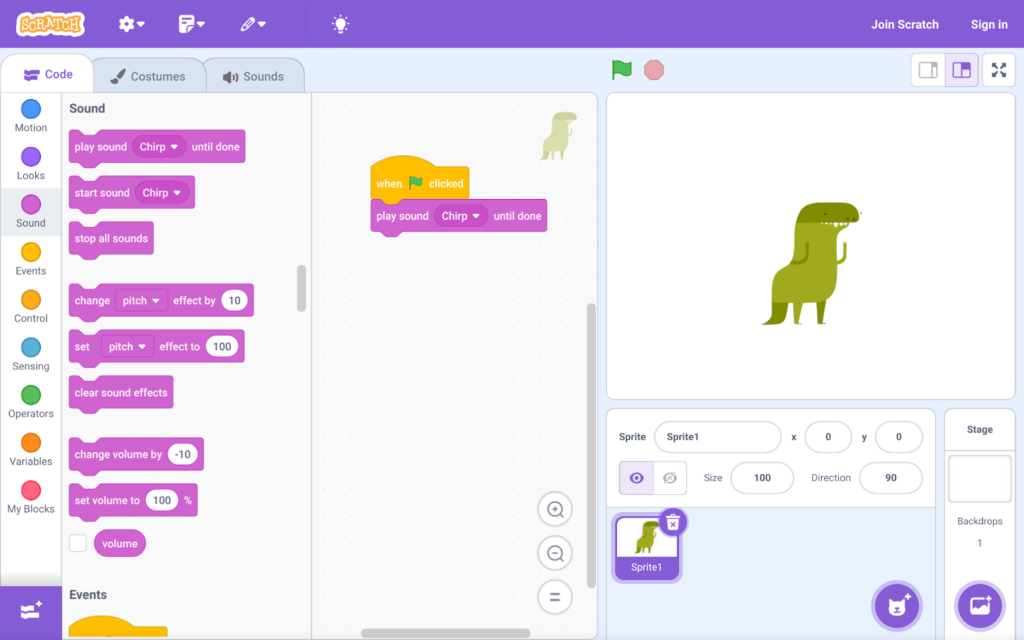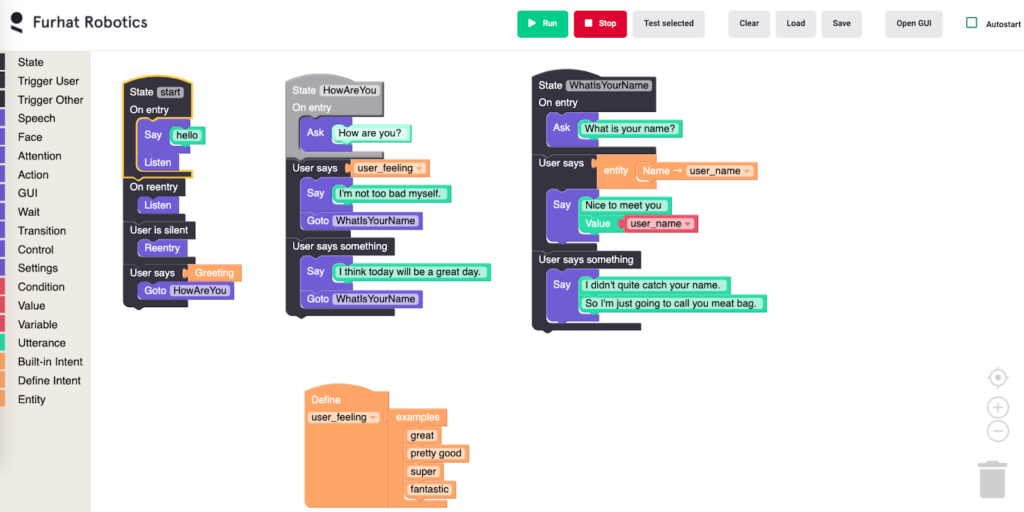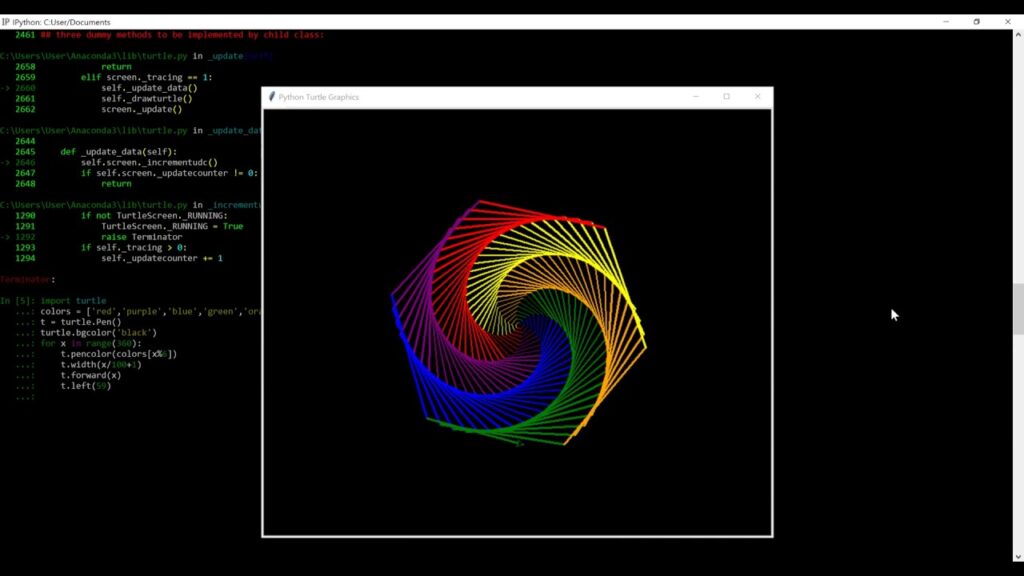Enter kids programming languages, a revolutionary approach to learning that transforms coding from a daunting task into an exciting adventure. Through platforms like Scratch, Blockly, Python with Turtle Graphics, Swift Playgrounds, and Lego Mindstorms, children are not only learning to code but also developing critical thinking, creativity, and collaboration skills.
In this article, we delve into the captivating realm of kids programming languages, exploring how each platform fosters learning, creativity, and innovation in young minds. From building virtual worlds to designing robots, these tools are building the foundation for future innovators who will shape the world of tomorrow.
Scratch: Where Creativity Takes Shape

Scratch, developed by MIT, stands as a beacon in the world of kids programming languages, offering an intuitive and engaging platform for young learners to explore the realms of coding and creativity.
- The Foundation of Scratch. At its core, Scratch utilizes a visual, block-based interface, eliminating the need for complex syntax and allowing children as young as 8 years old to dive into coding with ease. Instead of typing lines of code, users snap together colorful blocks that represent programming commands, fostering an understanding of coding concepts in a playful and tangible way;
- Nurturing Creativity Through Projects. One of Scratch’s most captivating features is its ability to empower children to create. With an extensive library of sprites (characters) and backgrounds, as well as a palette of sounds and visual effects, kids can bring their imaginations to life. From animated stories and interactive games to digital artwork and music compositions, Scratch provides a canvas for endless creativity;
- Learning Through Exploration and Collaboration. Scratch goes beyond teaching coding skills; it cultivates a culture of exploration and collaboration. Through the Scratch online community, young programmers can share their projects, seek inspiration from others, and collaborate on creative endeavors. This collaborative environment not only enhances learning but also instills valuable social and communication skills;
- Building Confidence and Resilience. As children experiment and iterate on their projects in Scratch, they develop resilience in problem-solving and critical thinking. They learn to embrace challenges, debug errors, and persevere until they achieve their desired outcomes. This process builds confidence and resilience, essential qualities that extend far beyond the realm of coding;
- Empowering Future Innovators. Scratch isn’t just about teaching kids to code; it’s about empowering them to become creators, innovators, and problem-solvers. By providing a platform where young minds can turn their ideas into reality, Scratch sparks a passion for learning and exploration that can shape the future of technology and beyond.
Scratch stands as a testament to the transformative power of kids programming languages. By nurturing creativity, fostering collaboration, and building confidence, Scratch not only equips children with essential coding skills but also lays the foundation for a lifetime of innovation and discovery.
Blockly: Building Blocks for Young Coders

Blockly, a web-based visual programming language developed by Google, serves as an accessible and versatile tool for introducing children to the fundamentals of coding. With its block-based interface, Blockly provides a stepping stone for young learners to explore the world of programming in an interactive and engaging manner.
- Intuitive Interface, Endless PossibilitiesAt the heart of Blockly lies its intuitive block-based interface, where users can drag and drop blocks to create sequences of code. This visual approach abstracts away the complexities of traditional text-based programming languages, making it easier for children to grasp coding concepts such as loops, conditionals, and functions;
- Tailored for Beginners and Beyond. Blockly’s flexibility caters to learners of all levels, from beginners taking their first steps into the world of coding to more advanced users seeking to expand their skills. With a diverse range of blocks and functionalities, Blockly allows children to progress at their own pace, gradually building upon their knowledge and tackling increasingly complex coding challenges;
- Engaging Projects, Real-world Applications. With Blockly, learning to code becomes an interactive journey filled with exciting projects and real-world applications. From creating simple animations and games to designing simulations and interactive stories, children have the opportunity to explore their interests and apply coding concepts in meaningful ways, fostering creativity and problem-solving skills along the way;
- Seamless Integration, Boundless Opportunities. Blockly seamlessly integrates with various platforms and technologies, offering endless opportunities for experimentation and exploration. Whether it’s programming robots, controlling virtual drones, or building web applications, Blockly empowers young coders to unleash their creativity and embark on diverse coding adventures across different domains and disciplines;
- Cultivating 21st Century Skills. Beyond teaching coding fundamentals, Blockly nurtures a range of 21st-century skills essential for success in today’s digital age. Through collaborative projects and problem-solving challenges, children develop critical thinking, communication, and teamwork skills, preparing them to thrive in an increasingly technology-driven world.
Blockly serves as a foundational tool for cultivating a new generation of coders and innovators. With its intuitive interface, engaging projects, and emphasis on real-world applications, Blockly empowers young learners to explore their potential, unlock their creativity, and embark on a journey of lifelong learning and discovery in the ever-evolving landscape of technology and programming.
Python (with Turtle Graphics): Drawing Paths to Learning

Python, a powerful and versatile programming language, takes on a playful twist when paired with Turtle Graphics, offering young learners a dynamic and interactive introduction to the world of coding.
- Unveiling Python’s Potential. Python’s popularity in the coding community stems from its simplicity, readability, and vast array of applications. Despite being a favorite among professional developers, Python also serves as an ideal entry point for children due to its clear syntax and intuitive structure;
- Introducing Turtle Graphics. Turtle Graphics, a built-in Python module, brings coding to life by allowing children to create colorful drawings and designs using simple commands. Through the metaphor of a turtle moving across a canvas, young learners can grasp fundamental programming concepts such as loops, functions, and conditional statements in a visual and hands-on manner;
- Nurturing Creativity Through Visualization. With Python and Turtle Graphics, coding becomes a creative endeavor as children use code to generate intricate patterns, geometric shapes, and even elaborate artworks. By experimenting with different commands and parameters, young coders can express their imagination and unleash their creativity on the digital canvas;
- Fostering Problem-solving Skills. As children embark on coding projects with Python and Turtle Graphics, they encounter challenges that require logical thinking and problem-solving skills to overcome. Whether it’s designing a maze-solving algorithm or creating a symmetrical pattern, each task presents an opportunity for young learners to apply their coding knowledge and develop resilience in the face of challenges;
- Bridging Concepts with Real-world Applications. Python and Turtle Graphics provide a bridge between abstract programming concepts and real-world applications, enabling children to see the tangible results of their code. From simulating natural phenomena like fractals and spirals to programming games and puzzles, young coders can explore diverse fields and discover the practical applications of coding in everyday life;
- Empowering Lifelong Learners. Beyond teaching coding skills, Python and Turtle Graphics lay the foundation for a lifelong journey of learning and exploration. By instilling a passion for coding and nurturing essential skills such as creativity, problem-solving, and logical thinking, this dynamic duo equips young learners with the tools they need to thrive in an increasingly digital world.
Python with Turtle Graphics offers a captivating pathway for children to embark on their coding journey. Through creative visualization, problem-solving challenges, and real-world applications, young learners can develop essential skills while discovering the boundless possibilities of coding. As they draw paths to learning with Python and Turtle Graphics, children not only unlock the mysteries of programming but also pave the way for a future filled with innovation, creativity, and endless opportunities.
Swift Playgrounds: Coding Adventures on iPad

Swift Playgrounds, an innovative app developed by Apple, revolutionizes the way children learn to code by transforming the iPad into a dynamic playground for programming adventures.
- Introducing Swift: The Language of Innovation. At the heart of Swift Playgrounds lies Swift, Apple’s powerful and intuitive programming language used to create apps for iOS, macOS, watchOS, and tvOS. With its clear syntax and modern features, Swift provides a user-friendly entry point for young learners to explore the world of coding;
- Interactive Learning through Puzzles and Challenges. Swift Playgrounds gamifies the coding experience with a series of interactive puzzles and challenges designed to engage and educate young coders. Through hands-on experimentation and problem-solving, children embark on exciting coding adventures that gradually introduce them to Swift syntax, programming concepts, and best practices;
- Bridging the Gap Between Play and Learning. By blending gameplay with educational content, Swift Playgrounds bridges the gap between play and learning, making coding accessible and enjoyable for children of all ages and skill levels. Whether they’re navigating Byte, the lovable coding character, through a maze or solving coding puzzles to unlock new levels, young learners are immersed in a captivating learning experience that sparks curiosity and fosters creativity;
- Real-time Feedback and Guidance. Swift Playgrounds provides real-time feedback and guidance to support children as they code, offering hints and suggestions to help them overcome challenges and advance through the curriculum. With its interactive lessons and adaptive learning features, Swift Playgrounds ensures that every child receives personalized support on their coding journey;
- Empowering Future App Developers. Beyond teaching coding fundamentals, Swift Playgrounds empowers children to become creators and innovators in the digital world. By mastering Swift and honing their coding skills through hands-on projects and challenges, young learners gain the confidence and expertise needed to pursue careers in app development and technology;
- Building a Community of Coders. Swift Playgrounds fosters a sense of community among young coders, enabling them to share their projects, collaborate with peers, and celebrate their achievements together. Through the Swift Playgrounds community, children can connect with like-minded individuals, showcase their creativity, and inspire others to embark on their coding adventures.
Swift Playgrounds revolutionizes coding education by providing a fun, interactive, and accessible platform for children to learn Swift and unleash their creativity. With its engaging gameplay, real-time feedback, and emphasis on community, Swift Playgrounds empowers young learners to embark on coding adventures on the iPad and beyond, paving the way for a future filled with innovation, imagination, and endless possibilities.
Lego Mindstorms: Building, Coding, and Beyond

Lego Mindstorms represents an unparalleled fusion of physical building and digital coding, empowering children to embark on a transformative journey of creativity, innovation, and exploration.
- The Power of Playful Learning.At the core of Lego Mindstorms lies the belief that learning should be fun and hands-on. By combining the timeless appeal of Lego bricks with cutting-edge technology, Mindstorms provides children with a dynamic platform to engage in playful learning experiences that foster creativity, problem-solving, and collaboration;
- Building Blocks of Robotics.With Lego Mindstorms, children become architects of their own robotic creations, using an assortment of sensors, motors, and bricks to design robots limited only by their imagination. From robotic animals and vehicles to machines that perform specific tasks, Mindstorms encourages experimentation and innovation, empowering young engineers to bring their ideas to life;
- Coding with Visual Programming.Mindstorms introduces children to the world of coding through an intuitive visual programming interface, where they can drag and drop blocks to create sequences of commands that control their robots’ behavior. This block-based programming language simplifies coding concepts, making it accessible for beginners while offering advanced capabilities for more experienced users;
- Hands-On Exploration and Experimentation.Mindstorms encourages hands-on exploration and experimentation, providing children with the opportunity to test their robots in real-world scenarios and refine their designs based on feedback and observations. Through trial and error, young engineers learn the value of perseverance, resilience, and iterative problem-solving as they strive to achieve their robotic goals;
- Interdisciplinary Learning at its Best. Beyond robotics and coding, Mindstorms promotes interdisciplinary learning by integrating concepts from science, technology, engineering, and mathematics (STEM). Children develop a holistic understanding of STEM principles as they apply math and physics concepts to design mechanisms, conduct experiments, and analyze data in the context of their robotic projects;
- Inspiring the Innovators of Tomorrow. Lego Mindstorms inspires the innovators of tomorrow by nurturing a passion for STEM education and empowering children to become creators and problem-solvers in the digital age. Through hands-on building, coding, and experimentation, young engineers gain the skills, confidence, and creativity needed to tackle the challenges of the future and make a positive impact on the world.
Lego Mindstorms represents more than just a toy; it’s a transformative learning experience that empowers children to explore, create, and innovate in the fields of robotics, coding, and beyond. By combining the joy of play with the power of technology, Mindstorms ignites a passion for learning and discovery that shapes the minds and inspires the imaginations of young engineers around the globe.
Conclusion
As we conclude our exploration of kids programming languages, one thing becomes abundantly clear: the impact of these innovative tools extends far beyond coding proficiency. Through Scratch, Blockly, Python with Turtle Graphics, Swift Playgrounds, and Lego Mindstorms, children are not only mastering the language of technology but also nurturing the seeds of innovation, creativity, and problem-solving that will propel them forward in an increasingly digital world.
With each line of code they write, each project they create, and each problem they solve, children are honing skills that will serve them well in any future endeavor they choose to pursue. Whether they become software engineers, artists, scientists, or entrepreneurs, the lessons learned through kids programming languages will remain invaluable, guiding them as they navigate the challenges and opportunities that lie ahead.
